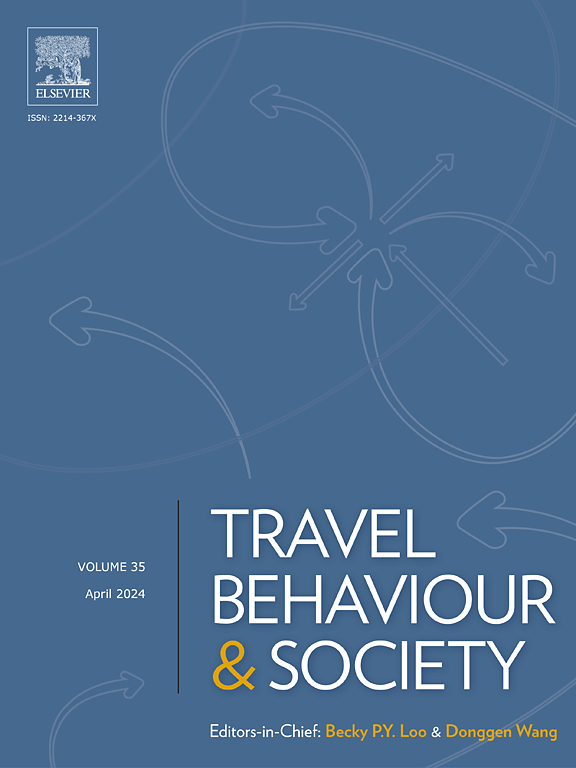迈向转变:大流行病城市街区步行实践的适应性和功能
IF 5.1
2区 工程技术
Q1 TRANSPORTATION
引用次数: 0
摘要
许多关于后流行病城市街区向社会生态和弹性未来过渡的概念都以步行为中心。然而,除了频率、合理性或建筑环境的具体特征之外,这些概念较少反映步行的生活体验。本文研究了步行的动态及其与城市街区日常生活实践的联系。以 COVID-19 大流行病为分析视角,开展了定性焦点小组活动,以探讨步行体验。对步行的适应性和功能的分析表明,步行的灵活性和复原力是多方面的。在适宜步行程度较高的社区,步行是日常协调的一种重要方式。然而,步行并不完全是一种愉悦、方便或直接有助于摆脱碳密集型日常行为的方式。相反,步行在社会生态和弹性转型中发挥着复杂而多维的作用,需要政策和规划来处理不同要素和实践之间的关系。本文为步行能力和 COVID-19 交通文献提供了定性见解,并展示了社会实践视角的益处。本文章由计算机程序翻译,如有差异,请以英文原文为准。
Stepping towards transformation: Adaptations and functions of walking practices in the pandemic urban neighbourhood
Many concepts of the post-pandemic urban neighbourhood transitioning into a socio-ecological and resilient future centre on walking. However, the lived experiences of walking – beyond frequencies, rationalities or specific features of the built environment – are less reflected in these concepts. This paper studies the dynamics of walking and its entanglements with practices of everyday life in an urban neighbourhood. Under the analytical lens of the COVID-19 pandemic, qualitative focus groups were conducted to explore walking experiences. The analysis of adaptations and functions of walking shows the versatility of walking practices in their flexibility and resilience. Walking in a neighbourhood that is attributed high walkability functions as a key mode in everyday coordination. Walking, however, is not exclusively pleasurable, accessible or directly conducive to a shift away from carbon-intensive everyday practices. Rather, the complex and multi-dimensional role of walking within a socio-ecological and resilient transformation requires policy and planning to address the relations of different elements and practices. The paper contributes qualitative insights to both walkability and COVID-19 transport literature, and demonstrates the benefits of a social practice perspective.
求助全文
通过发布文献求助,成功后即可免费获取论文全文。
去求助
来源期刊

Travel Behaviour and Society
TRANSPORTATION-
CiteScore
9.80
自引率
7.70%
发文量
109
期刊介绍:
Travel Behaviour and Society is an interdisciplinary journal publishing high-quality original papers which report leading edge research in theories, methodologies and applications concerning transportation issues and challenges which involve the social and spatial dimensions. In particular, it provides a discussion forum for major research in travel behaviour, transportation infrastructure, transportation and environmental issues, mobility and social sustainability, transportation geographic information systems (TGIS), transportation and quality of life, transportation data collection and analysis, etc.
 求助内容:
求助内容: 应助结果提醒方式:
应助结果提醒方式:


